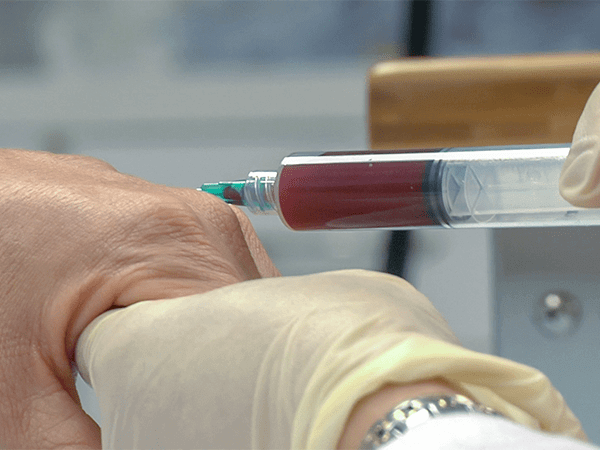Platelet-rich plasma Platelet Rich Plasma is a type of blood plasma that is concentrated with platelets. Platelets are cells that play a role in blood clotting, but they also contain growth factors that can stimulate tissue repair. PLATELET RICH PLASMA injections are used to treat a variety of conditions, including:
Sports injuries, such as torn tendons and ligaments
Arthritis
Tendinitis
Muscle injuries
Hair loss
Skin conditions, such as acne and scarring
PRP injections are typically performed in a doctor’s office. The doctor will draw a small amount of blood from the patient’s arm. The blood will then be spun in a centrifuge to separate the platelets from the rest of the blood. The concentrated platelets will then be injected into the injured or affected area.
PRP injections are generally well-tolerated. Some people may experience mild side effects, such as pain, swelling, and bruising at the injection site.
PRP injections are not a cure for any condition, but they can help to improve symptoms and promote healing. The number of treatments needed will vary depending on the condition being treated.
PRP injections are a relatively new and emerging treatment option. More research is needed to determine their long-term safety and effectiveness.
Here are some of the benefits of PRP injections
- It is a natural treatment that uses the patient’s own blood cells.
- It is minimally invasive and has a short recovery time.
- It has been shown to be effective in treating a variety of conditions.
Here are some of the risks of PRP injections
- There is a risk of bleeding, infection, and pain at the injection site.
- PRP injections are not a cure for any condition, and they may not be effective for everyone.
- The cost of PRP injections is not covered by insurance in most cases.
How is PRP Made?
Platelet-rich plasma (PRP) is made by taking a small amount of blood from the patient and then spinning it in a centrifuge at high speed. This separates the platelets from the rest of the blood cells. The platelets are then concentrated and injected into the area that needs healing.
The process of making PRP is relatively simple and can be done in a doctor’s office or a laboratory. The first step is to draw a small amount of blood from the patient, usually about 10 millilitres (mL). The blood is then placed in a centrifuge and spun at high speed for several minutes. This separates the platelets from the rest of the blood cells. The platelets are then concentrated and injected into the area that needs healing.
PRP is used to treat a variety of conditions, including
- Tendinitis
- Arthritis
- Muscle injuries
- Hair loss
- Skin conditions, such as acne and wrinkles
PRP is thought to work by stimulating the growth of new blood vessels and tissue. This can help to speed up the healing process and reduce pain.
PRP is a safe and effective treatment for a variety of conditions. However, it is important to note that it is not a cure-all. PRP may not be effective for everyone, and it is important to discuss the risks and benefits of treatment with your doctor before undergoing PRP.


Here are some of the benefits of PRP
- It is a natural treatment that uses the patient’s own blood.
- It is minimally invasive and does not require surgery.
- It can help to improve pain and function in the treated area.
- It can help to speed up the healing process.
Here are some of the risks of PRP
There is a small risk of infection.
There is a small risk of bruising and swelling.
PRP may not be effective for everyone.
What are the Outcomes after a PRP Injection?
Platelet-rich plasma (PRP) is made by taking a small amount of blood from the patient and then spinning it in a centrifuge at high speed. This separates the platelets from the rest of the blood cells. The platelets are then concentrated and injected into the area that needs healing.
The process of making PRP is relatively simple and can be done in a doctor’s office or a laboratory. The first step is to draw a small amount of blood from the patient, usually about 10 millilitres (mL). The blood is then placed in a centrifuge and spun at high speed for several minutes. This separates the platelets from the rest of the blood cells. The platelets are then concentrated and injected into the area that needs healing.
